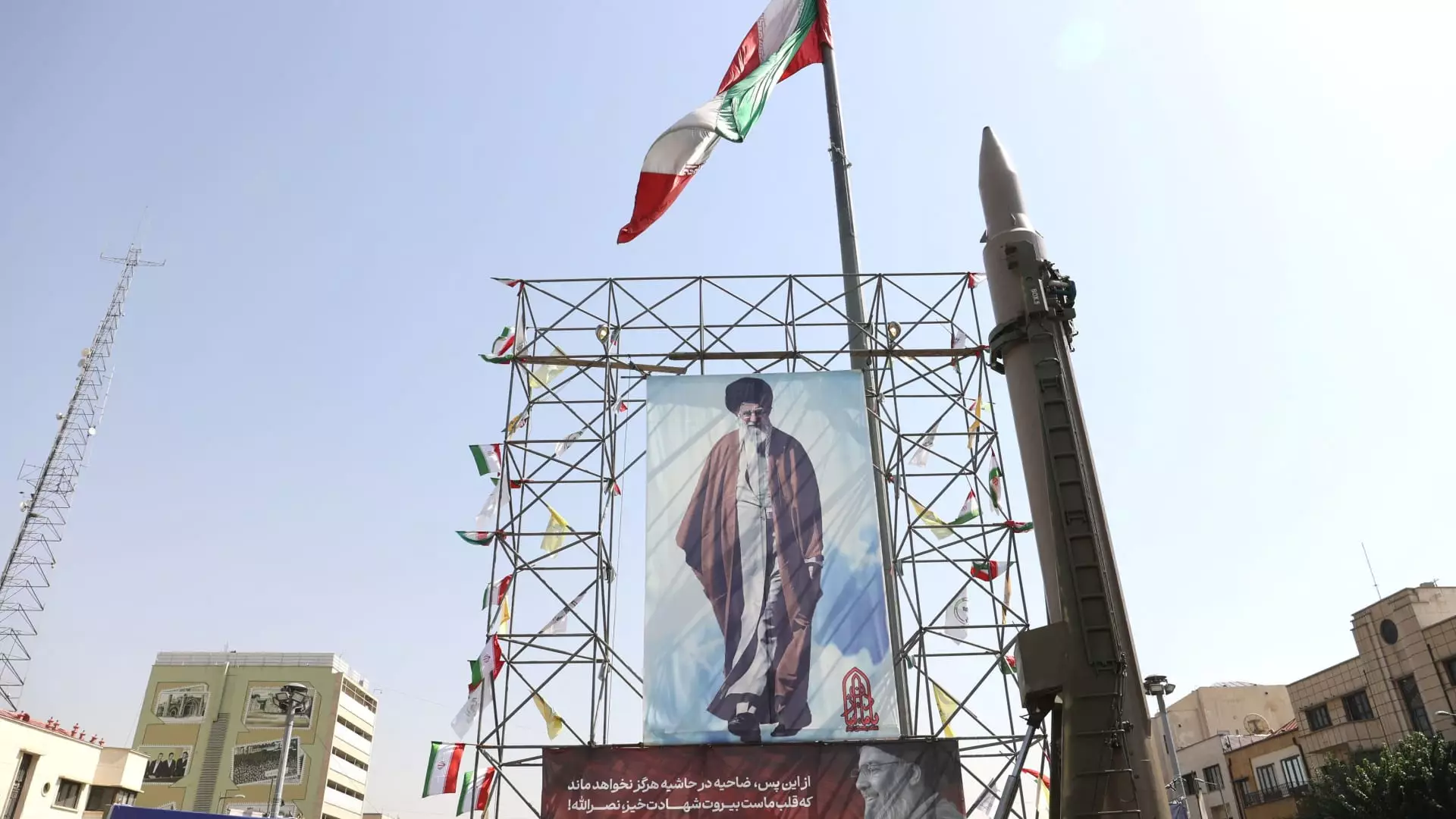The political landscape surrounding Iran has undergone a tectonic shift since President Donald Trump embarked on a fraught second term. Determined to safeguard American interests while navigating a complex web of international relations, Trump’s inconsistent approach seems to oscillate between aggressive posturing and a surprisingly conciliatory tone. Recent overtures from the president, which include letters to Ayatollah Ali Khamenei suggesting negotiations over Iran’s nuclear ambitions, mark a stark departure from the strategies that defined his administration’s earlier dealings. The juxtaposition of inviting dialogues while simultaneously ramping up “maximum pressure” sanctions reveals a chaotic strategy lacking clear direction or, dare I say, coherence.
This divergence in approach suggests that the administration might be struggling to reconcile its ambitions with practical realities—a sentiment echoed by analysts who express grave concerns about the efficacy of Trump’s mixed messaging. The question begs to be asked: Is this a power play aimed at undermining Iran’s regional stability, or is it a half-hearted attempt to regain diplomatic ground once lost?
Iran’s Nuclear Calculus: A High-Stakes Game
Iran’s current stance on its nuclear program, highlighted by its controversial uranium enrichment levels, illustrates its strategy of leveraging potential weapons capability to negotiate concessions. As reported, Iran is enriching uranium at an alarming rate—60% purity—which is far beyond what was stipulated in the 2015 Joint Comprehensive Plan of Action (JCPOA). This high level of enrichment shapes a troubling narrative, conjuring fears and misconceptions about Iran’s intentions: is it genuinely pursuing civilian energy, or is it laying the groundwork for a nuclear arsenal?
The International Atomic Energy Agency’s warnings regarding Iran’s nuclear advancements reflect a palpable tension brewing beneath the surface. With only a slim margin until weapons-grade enrichment, it is alarming that any diplomatic discussions appear dulled by this ticking clock. Iran’s justification—that it seeks a civilian energy program—would perhaps stand stronger if we didn’t witness such dramatic leaps in enrichment levels. It suggests to the world that Iran’s nuclear ambitions are far more complex and potentially detrimental than what they purport to be.
Leverage and Distrust: A Battle of Wills
Amid the backdrop of rising uranium stockpiles and fractured relationships with regional allies, a clear dichotomy of leverage emerges. While Trump retains significant bargaining power, evidenced by the crippling economic sanctions that have left Iran’s economy gasping for breath, the intricate relationships in the region remain less predictable. The dramatic loss of allies such as Syria’s Bashar al-Assad complicates matters further. In this volatile context, the power dynamics shift rapidly, often leading to inconsistent solutions.
Iran’s supreme leader’s staunch rejection of negotiations under pressure isn’t merely rhetoric; it showcases a deep-rooted skepticism towards U.S. intentions. It poses a challenging reverse, as it ties Iran’s willingness to negotiate to the very conditions Trump claims are instrumental. Analysts echo the sentiment of mutual distrust—an obstacle neither side appears willing to surmount, leading to an impasse that seems to favor neither side in a bid for peace.
Public Perception and Stakes of Diplomacy
The recent political theater involving Ukrainian President Volodymyr Zelenskyy served as a reminder of the precariousness of U.S.-Iranian negotiations. The public confrontation that transpired during Zelenskyy’s visit highlights the treacherous terrain on which diplomacy must tread and underlines Iran’s anxiety regarding U.S. reliability. If anything, this episode reaffirms a sentiment harbored by Tehran: the fear that American dealings are contingent upon shifting political winds, making long-term plans untrustworthy.
Additionally, the broader implications of these interactions resonate far beyond immediate geopolitical strategy. They suggest a landscape of international relations riddled with unpredictability—a scenario in which ambiguity could easily evolve into confrontational behaviors, should trust erode any further. Iran’s inclination towards establishing a nuclear threshold doesn’t merely serve as a bargaining tool; it reflects a desperation that could escalate into reckless adventurism.
The Path Forward: Stalemate or Strategy?
As President Trump appears to selectively draw upon both peace and war tactics, the question of Iran’s next steps becomes increasingly complex. While Tehran may wish to pursue a resolution to alleviate economic sanctions, its strategy seems to favor muddling through. A passive approach may buy time but does little to ensure stability, particularly when viewed against the backdrop of escalating sanctions and threatened military action from Israel and the U.S.
Ultimately, the clock is ticking for American and Iranian leaders both alike. In the face of self-destructive tendencies and principled isolationism, there remains a squeezed window for potential compromise. Yet, with entrenched positions and heightened wariness, the prospects for a mutually acceptable resolution seem increasingly bleak. In this intricate stage of international diplomacy, the stakes are not merely nuclear; they are emblematic of the intricate dance of modern warfare and the perilous nature of power.


Leave a Reply